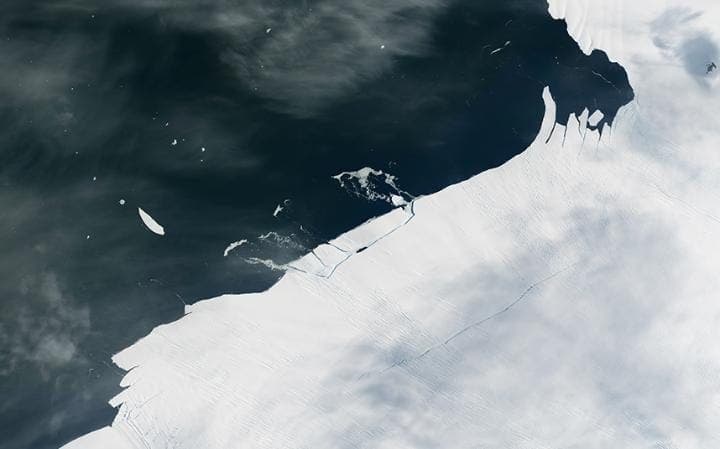NASA’s satellites witnessed the dramatic breaking of the iceberg. The icy surface first cracked and then, a mile-long chunk of ice ripped apart.
The immense Pine Island Glacier is known for its instability, but we’ve rarely witnessed something happening at this scale. Calving is not uncommon, and the glacier amounts for 20 percent of the ice sheet’s total ice flow to the ocean, according to NASA scientists. Especially in recent years, the ice has been constantly retreating, giving way to the liquid water.
The Earth-watching Landsat satellite (you know, the type some US politicians want to retire because ‘NASA shouldn’t be watching the Earth‘) captured the event unfolding in all its glory.
The glacier’s last major iceberg break took place back in July 2015, when an iceberg measuring almost 225 square miles separated. Though this event is much smaller than the one from 2015, it’s yet another proof of the glacier’s instability in the face of climate change.
“I think this event is the calving equivalent of an ‘aftershock’ following the much bigger event,” Ian Howat, a glaciologist at The Ohio State University, said in a statement. “Apparently, there are weaknesses in the ice shelf — just inland of the rift that caused the 2015 calving — that are resulting in these smaller breaks.”
More calving is expected in the near future, and even more calving might be taking place without us knowing it. The West Antarctic Ice Sheet might completely collapse in the next 100 years. In the meantime, we’ll see more and more chunks breaking apart and melting.
Yet again, this shows just how vital Earth monitoring is. If we want to truly understand and tackle processes taking place at such scales, the importance of Landsat-like missions cannot be overstated.










